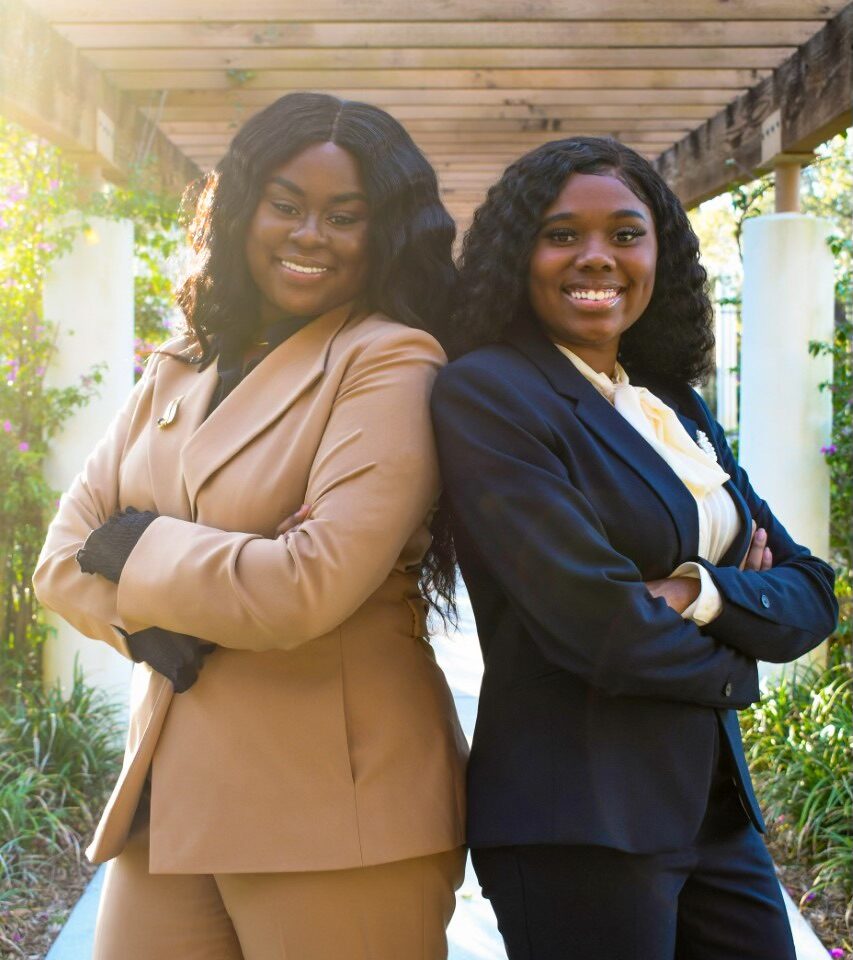Roberson, Brooks look back at term, hope efforts resonated with student body

Prior to their ascension as the first Black gubernatorial administration of the Tampa campus, seniors Alexis Roberson and Kiara Brooks established their vision to “FIGHT” for diversity and inclusion throughout the university long before taking office.
Following the 2020 murder of George Floyd, Roberson and Brooks collaborated in meetings between the Black Student Union and Student Government (SG) to discuss what USF could do for the betterment of the Black community during the tense national climate. Through these meetings, the duo sympathized with the students who felt their needs were at the mercy of a complacent university administration’s ear.
Finding commonality in their desire to represent the seemingly unheard community, the pair led a victorious 2021 campaign to “FIGHT for the future,” resulting in Roberson becoming the governor and Brooks taking on the role of lieutenant governor.
“We saw how [the Black community] were no longer waiting for administration’s actions to prioritize their experience, but instead did it on their own,” Roberson said. “Serving in positions of leadership like this opens doors for people to come behind me, and just [continue] intentional conversations that weren’t really being had.”
The catalyst for their pursuit of the positions led to the development of the Everfi module for incoming freshmen and transfer students during orientation. Including lessons and activities that proliferate diversity and inclusion conversations, the module provides perspective on other students’ experiences.
Similar to other orientation modules, such as the AlcoholEDU module, the Everfi section must be completed before the end of students’ first year.
Continuing their focus on enhancing the student experience, Roberson and Brooks recognized that the pandemic flipped USF traditions and students’ exposure to campus life on its head.
Students who have already completed half of their degree have yet to step foot on campus and be presented with the opportunities to be a part of a community, according to Roberson.
“They don’t know where certain buildings are,” Roberson said. “So, where can that information be readily available for them?”
To combat these side effects of the virus, the pair arranged a student organization engagement lunch. The event hosted leaders of clubs seeking to improve participation, giving them the opportunity to speak to their SG counterparts on how to advertise their club.
“‘How can Student Government assist?’ Posting them on Instagram or getting them physically in front of students at orientation,” Roberson said. “It was an opportunity for them to tell us specifically what they’re enjoying on campus and what they may not have been enjoying and what we can do to just platforming their presentation.”
Part of cultivating a more inclusive environment for students is making sure they are familiar with the mental health and well-being resources available on campus, according to Brooks.
The week of Feb. 28 to March 4, the duo hosted a Week of Wellness on the SG Instagram account, sharing resources, such as Tao and Togetherall, via daily posts.
“We broke down a different resource and explained how to basically, not only get in contact with it, but also how they need to utilize them every day to be successful students,” Brooks said.
“We just really wanted to give students an opportunity to have everything that we have to offer in regard to mental health laid out for them.”
Despite being successful in accomplishing their desired initiatives, Roberson and Brooks admitted that the learning to become a leader required adaptation.
During their campaign, the team wanted to design a system where students could donate meal swipes. However, after taking office, they soon realized that the complicated system of meal swipes would likely stump their good intentions.
Instead of giving up, negotiations and ideas were traded between the pair and Aramark, the food company associated with USF dining, to still help the population of students that struggle to afford food.
The final product of their discussions resulted in a Dining Dollar Donation Day, where students who estimate a portion of their allotted dining dollars for the semester will go unused can donate them to students who could benefit. Along with the donations, students will be presented resources on affordable cooking and dietary information necessary for optimized academic performance.
“On that day, we want to motivate students to donate any excess amount of dining dollars that they have that they don’t see themselves using, and that money would be reallocated to food insecure students that are identified by the university,” Roberson said. “We’re actually collaborating with dining and with Aramark for their eat well, live well event. They do this annually.”
Thinking about their legacy as student leaders, Roberson and Brooks hope they inspired the student body to be purposeful in their intentions when giving back to the USF community.
“I would say more power lies within the students, more than it lies in administration and more than it lies in Student Government,” Roberson said. “[When] we come together as a community, there’s nothing really that could ever stop us or no issue that we can’t tackle together.”







